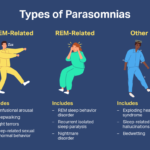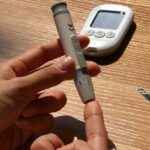Bed Bug Bites: Symptoms, Causes and Treatment
Bed bugs are small, wingless insects that feed on the blood of humans and animals. They are usually active at night and hide in cracks and crevices of mattresses, furniture, carpets and other items near the bed. Bed bug bites can cause itchy, red rashes on the skin that may last for a week or two. Bed bug infestations are not a sign of poor hygiene or cleanliness, but they can be difficult to get rid of and may require professional extermination.
Symptoms of bed bug bites
Bed bug bites are often hard to distinguish from other insect bites or skin conditions. They may appear as small, red bumps or welts that are inflamed and sometimes have a dark spot in the center. They may also form blisters or hives at the bite site. Bed bug bites usually occur in a line or a cluster on exposed areas of the body, such as the face, neck, arms and hands. Some people may not have any reaction to bed bug bites, while others may develop an allergic reaction that can cause severe itching, swelling, burning or anaphylaxis.
Bed bug bites do not transmit any diseases, but they can lead to secondary infections if scratched or irritated. Scratching can also cause scarring or discoloration of the skin. To prevent infection, it is important to keep the bite area clean and avoid scratching. Applying an over-the-counter antiseptic cream or lotion can help prevent infection and reduce inflammation. Taking an oral antihistamine or applying a topical steroid cream can also help relieve itching and burning sensations. If the symptoms are severe or persistent, it is advisable to consult a doctor for professional treatment.
Causes of bed bug infestations
Bed bugs can enter your home through various ways, such as traveling on luggage, clothing, furniture, bedding or other items that have been in contact with infested places. Bed bugs can also spread from one room to another or from one building to another through pipes, wires, vents or cracks in walls. Bed bugs are not attracted by dirt or food, but by warmth, carbon dioxide and blood. They can survive for several months without feeding and can withstand extreme temperatures.
Bed bugs are most commonly found in places where people sleep or rest, such as hotels, motels, hostels, dormitories, apartments, houses, hospitals, nursing homes or shelters. They can also be found in other places where people spend time, such as offices, schools, cinemas, libraries or public transportation. Bed bugs can infest any type of furniture or fabric that provides hiding places for them, such as mattresses, box springs, bed frames, headboards, sofas, chairs, curtains or carpets.
How to identify bed bug infestations
The presence of bed bugs can be detected by various signs, such as:
– Live bed bugs: Adult bed bugs are about the size of an apple seed and have a flat, oval-shaped body that is reddish-brown in color. They can be seen with the naked eye or with a magnifying glass. Nymphs (young bed bugs) are smaller and lighter in color than adults. Eggs are tiny, white and oval-shaped and are usually attached to surfaces near the bed.
– Bed bug feces: Bed bug feces are dark brown or black spots that stain the bedding, mattress seams, furniture upholstery or walls. They may also have a musty odor.
– Blood stains: Blood stains may be found on the sheets, pillowcases or clothing from crushed bed bugs or from bleeding bites.
– Shed skins: Bed bugs shed their skins five times before reaching maturity. The shed skins are pale yellow and resemble empty shells of bed bugs.
– Bite marks: Bite marks may be visible on the skin as red bumps or welts that itch or burn.
If you suspect that you have bed bugs in your home, you should inspect your sleeping area carefully and look for any of the signs mentioned above. You can also use a flashlight or a sticky tape to capture any live bed bugs or eggs. You can also contact a pest control professional who can inspect your home and confirm the presence of bed bugs.
How to eliminate bed bug infestations
Getting rid of bed bugs can be challenging and may require multiple treatments and methods. Some of the steps that you can take to eliminate bed bug infestations are:
– Wash and dry all your bedding, clothing and other washable items in hot water (at least 60°C) and high heat (at least 40°C) for at least 30 minutes. This will kill any bed bugs or eggs that may be present on them.
– Vacuum your mattress, box spring, bed frame, headboard, furniture, carpets and other areas where bed bugs may hide. Dispose of the vacuum bag or contents in a sealed plastic bag and throw it away in an outdoor trash can.
– Steam clean your mattress, box spring, bed frame, headboard, furniture, carpets and other areas where bed bugs may hide. Steam can penetrate deep into the cracks and crevices and kill any bed bugs or eggs that may be present.
– Use a bed bug-proof mattress cover, box spring cover and pillow cover to encase your mattress, box spring and pillows. This will prevent any bed bugs from escaping or entering your bedding and will also protect them from future infestations.
– Apply a residual insecticide spray or dust to your mattress, box spring, bed frame, headboard, furniture, carpets and other areas where bed bugs may hide. Follow the instructions on the label and use only products that are registered for bed bug control. Do not apply insecticides to your bedding or clothing or to your skin. Keep children and pets away from treated areas until they are dry.
– Use a non-residual contact insecticide spray or aerosol to kill any live bed bugs that you see. Follow the instructions on the label and use only products that are registered for bed bug control. Do not spray directly on your bedding or clothing or on your skin. Keep children and pets away from treated areas until they are dry.
– Repeat the above steps as needed until you are sure that all the bed bugs are gone. You may need to treat your home several times over a period of weeks or months to eliminate all the bed bugs and their eggs.
– Hire a pest control professional who can use more effective and specialized methods to eliminate bed bug infestations. These methods may include heat treatment, freezing treatment, fumigation or other techniques that can kill bed bugs in all stages of their life cycle.
How to prevent bed bug infestations
To prevent bed bug infestations from occurring or reoccurring in your home, you can take some preventive measures, such as:
– Inspect your luggage, clothing and other items for any signs of bed bugs before bringing them into your home after traveling or staying in places where bed bugs may be present.
– Avoid buying or using secondhand furniture, mattresses, bedding or clothing that may be infested with bed bugs. If you do buy or use them, inspect them carefully and treat them as described above before using them.
– Seal any cracks or crevices in your walls, floors, ceilings or furniture where bed bugs may hide or enter your home.
– Reduce clutter and eliminate any unnecessary items that may provide hiding places for bed bugs.
– Check your mattress, box spring, bed frame, headboard, furniture, carpets and other areas where bed bugs may hide regularly and treat them as described above if you find any signs of bed bugs.
Bed bug bites vs. other insect bites
Bed bug bites can be confused with other insect bites or skin conditions, such as mosquito bites, flea bites, scabies, hives or eczema. However, there are some differences that can help you distinguish them:
– Bed bug bites usually occur in a line or a cluster on exposed areas of the body, while other insect bites may be more randomly distributed.
– Bed bug bites usually have a dark spot in the center of each bite, while other insect bites may not have this feature.
– Bed bug bites usually last longer than other insect bites and may take up to two weeks to heal, while other insect bites may heal faster.
– Bed bug bites usually do not transmit any diseases, while other insect bites may transmit diseases such as malaria, dengue fever or Lyme disease.
If you are not sure whether you have bed bug bites or other insect bites or skin conditions, you should consult a doctor for diagnosis and treatment.
Bed bugs on pets
Bed bugs prefer to feed on human blood, but they can also feed on the blood of animals such as dogs, cats, birds or rodents. However, they do not live on their hosts like fleas or lice do. They only come out at night to feed and then return to their hiding places. Therefore, it is unlikely that you will find bed bugs on your pets’ fur or skin.
However, if you have bed bugs in your home, your pets may also suffer from their bites and develop similar symptoms as humans do. To protect your pets from bed bug bites, you should:
– Treat your home for bed bugs as described above.
– Wash and dry your pets’ bedding and toys in hot water and high heat regularly.
– Vacuum your pets’ sleeping areas frequently and dispose of the vacuum bag or contents in a sealed plastic bag.
– Apply a pet-safe insect repellent to your pets’ fur or skin according to the instructions on the label. Do not use products that are intended for humans or that contain DEET or permethrin.
– Consult a veterinarian if your pets show signs of allergic reaction or infection from bed bug bites.








